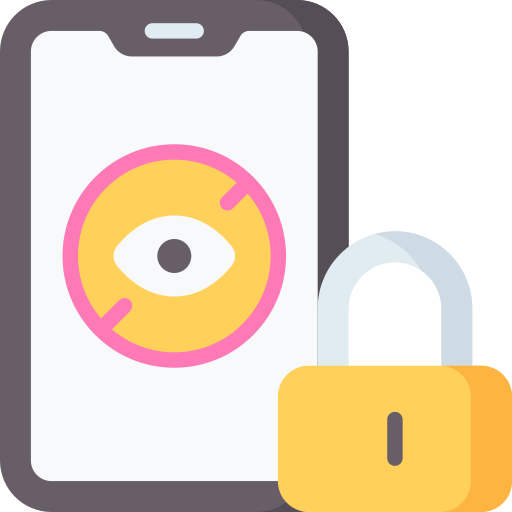Understanding the Need for a Family Tech Hub
In today’s digital age, technology has become an integral part of our daily lives. From smartphones to smart TVs, we rely on various devices and gadgets for communication, entertainment, and productivity. As a result, families are finding it increasingly important to have a centralized hub that can accommodate the tech needs of every member.
A family tech hub serves as a central location where all the necessary devices and equipment are stored and connected. It provides convenience by allowing easy access to shared resources such as printers, scanners, and storage devices. Additionally, having a designated space for tech activities helps promote organization and reduces clutter in other areas of the home.
Furthermore, a family tech hub is essential for managing internet usage among family members. With multiple devices being used simultaneously by different individuals with varying needs and preferences, it becomes crucial to establish secure network connections that prioritize safety while ensuring optimal performance. By implementing parental control features and monitoring tools within the hub’s setup, parents can have greater peace of mind knowing they have control over their children’s online activities.
By understanding the need for a family tech hub, families can create an environment that fosters efficient use of technology while promoting healthy boundaries for everyone involved. Whether it’s setting up user profiles with specific permissions or integrating communication tools like video conferencing software or project management platforms – having a dedicated space solely focused on meeting these requirements will undoubtedly enhance connectivity within the household without sacrificing security or functionality.
Identifying Your Family’s Tech Requirements
Identifying your family’s tech requirements is an essential step in creating a functional and efficient tech hub. Before diving into the world of gadgets and devices, it is important to assess your family’s specific needs and preferences. Start by considering the number of family members who will be using the tech hub, as well as their age groups and individual interests.
Take into account the types of activities that will be carried out in your tech hub. For example, if you have children who are involved in online gaming or video editing, you may need more powerful computers with high-performance graphics cards. On the other hand, if your focus is on productivity and remote work, investing in laptops with strong processing power and reliable internet connectivity might be more suitable.
In addition to individual needs, think about how your family interacts with technology as a whole. Are there shared interests that require collaborative tools? Do you prioritize privacy and security when it comes to data sharing? Understanding these aspects will help you determine whether features like cloud storage or communication platforms are necessary for your tech hub setup. By taking stock of these factors early on, you can ensure that your chosen devices and equipment align with both present needs and potential future growth without overspending or compromising functionality.
Choosing the Right Location for Your Tech Hub
When it comes to choosing the right location for your family tech hub, there are a few key factors to consider. Firstly, you’ll want to find a space in your home that is easily accessible and centrally located. This will ensure that everyone in the family can easily access the tech hub without any inconvenience or hassle.
Another important aspect to consider is the size of the space needed for your tech hub. Depending on how many devices and equipment you plan to have, you may need a larger area with ample storage options. It’s also essential to choose a location where there is enough room for comfortable seating and workspace if required.
Additionally, it’s crucial to select a location that provides good connectivity and minimal interference from other electronic devices. Avoid areas with high levels of noise or distractions as this could impact productivity and focus when using the tech hub. By carefully considering these factors, you can ensure that you choose the right location for your family’s tech hub – one that promotes efficiency, convenience, and optimal functionality without compromising on comfort or usability.
Selecting the Essential Devices and Equipment
When selecting the essential devices and equipment for your family tech hub, it is important to consider the specific needs and preferences of each family member. Start by identifying the primary uses of the tech hub, such as entertainment, education, or work-related tasks. This will help determine which devices are necessary for optimal functionality.
Consider investing in a reliable desktop computer or laptop that can handle multiple tasks simultaneously. Look for models with sufficient processing power, storage capacity, and memory to meet your family’s requirements. Additionally, ensure that these devices have compatibility with any specialized software or applications needed.
In addition to computers, other essential devices may include printers/scanners/copiers for document management needs and smart TVs for streaming content. Depending on your family’s interests and hobbies, you may also want to consider gaming consoles or virtual reality systems. Remember to research different brands and models before making a purchase decision to find the best fit within your budget constraints.
Establishing Secure Network Connections
One crucial aspect of setting up a family tech hub is establishing secure network connections. This ensures that your devices and data are protected from potential threats and unauthorized access. To achieve this, it is important to invest in a reliable router with advanced security features.
Firstly, you should change the default username and password of your router to something unique and strong. This will prevent any unauthorized users from easily accessing your network. Additionally, enabling encryption protocols such as WPA2 or WPA3 can further enhance the security of your network by encrypting the data transmitted between devices.
Another important step in establishing secure network connections is configuring a firewall. A firewall acts as a barrier between your internal network and external networks, monitoring incoming and outgoing traffic for any suspicious activity. It helps protect against malware, hackers, and other cyber threats by blocking potentially harmful connections.
Regularly updating both your router’s firmware and all connected devices is also essential for maintaining secure network connections. Manufacturers often release updates that address vulnerabilities or fix bugs that could be exploited by attackers. By keeping everything up-to-date, you ensure that you have the latest security patches installed on all devices within your tech hub.
By taking these steps to establish secure network connections within your family tech hub, you can safeguard both sensitive information and personal privacy from potential risks online without compromising on usability or convenience.
Setting Up User Profiles and Permissions
Setting up user profiles and permissions is an essential step in creating a secure and personalized tech hub for your family. By assigning individual profiles to each family member, you can ensure that everyone has access to the appropriate devices, applications, and content based on their age, interests, and responsibilities.
User profiles allow you to customize settings such as privacy restrictions, time limits, and app permissions according to each family member’s needs. For example, younger children may have restricted access to certain websites or apps while older teenagers may be granted more freedom within defined boundaries. This level of control helps promote online safety while still allowing individuals to explore technology at their own pace.
When setting up user profiles and permissions, it is important to establish clear guidelines and communicate them effectively with your family members. Explain the purpose behind these measures – that they are in place not only for security reasons but also for promoting responsible digital citizenship. Encourage open discussions about internet safety so that everyone understands the importance of adhering to the established rules.
By taking the time to set up user profiles and permissions correctly from the start, you can create a safe digital environment where all family members can enjoy technology without compromising their security or well-being. Remember that regular monitoring and adjustments may be necessary as your children grow older or new devices are added to your tech hub. Stay proactive in managing user profiles so that everyone benefits from a positive digital experience within your home.
Managing and Monitoring Internet Usage
One important aspect of establishing a family tech hub is managing and monitoring internet usage. With the vast amount of information available online, it is crucial to ensure that your family members are using the internet responsibly and safely. By implementing effective strategies for managing and monitoring internet usage, you can protect your loved ones from potential risks and promote healthy digital habits.
Firstly, it is essential to set clear guidelines and boundaries regarding internet usage within your household. Establish rules about when and how long each family member can access the internet, as well as which websites or online activities are allowed. This will help prevent excessive screen time and encourage a balanced approach to technology use.
Secondly, consider utilizing parental control features provided by various devices or software applications. These tools allow you to monitor and restrict access to certain websites or apps based on age-appropriate content filters. You can also track your children’s online activities, such as their browsing history or social media interactions, providing an opportunity for open discussions about responsible digital behavior.
Additionally, regular communication with your family members about safe internet practices is crucial in managing and monitoring their online activities effectively. Educate them about potential dangers they may encounter while browsing the web, such as cyberbullying or phishing attempts. Encourage open dialogues where they can ask questions or seek guidance if they come across something suspicious or uncomfortable online.
By implementing these strategies for managing and monitoring internet usage in your family tech hub, you can create a safer digital environment for everyone involved. Remember that promoting responsible online behavior starts with setting clear guidelines, utilizing parental controls when necessary, and fostering open communication about safe practices on the internet.
Utilizing Parental Control Features
Parental control features are an essential aspect of any family tech hub. These tools allow parents to monitor and manage their children’s online activities, ensuring a safe and secure digital environment. With parental controls, parents can set restrictions on content access, limit screen time, and block inappropriate websites or apps. By utilizing these features, families can promote responsible technology use and protect their children from potential online threats.
One key benefit of parental control features is the ability to set age-appropriate content filters. Parents can customize settings based on their child’s age and maturity level, blocking access to explicit or violent content that may not be suitable for young users. This feature helps create a safer browsing experience for kids while allowing them to explore the internet within appropriate boundaries.
Another important aspect of parental controls is the ability to limit screen time. Excessive device usage has been linked to various health issues in children, including obesity and sleep disturbances. By setting time limits through parental control tools, parents can encourage a healthy balance between screen time and other activities such as outdoor play or homework.
Additionally, parental control features enable parents to track their child’s online behavior and receive notifications about suspicious activity or attempts to access blocked websites or apps. This monitoring capability allows parents to intervene if they notice any concerning patterns or potential risks.
In conclusion
Integrating Communication and Collaboration Tools
Integrating communication and collaboration tools is essential for any family tech hub. These tools allow family members to stay connected and work together effectively, whether they are in the same room or miles apart. With the right tools in place, families can easily share information, coordinate schedules, and collaborate on projects.
One important tool for communication is a messaging app that allows instant messaging between family members. This can be particularly useful for quick updates or reminders throughout the day. In addition to text messages, some apps also offer voice and video calling features, making it easy to have face-to-face conversations even when physically separated.
Collaboration tools are equally important for families working together on projects or tasks. Cloud-based document sharing platforms enable multiple users to edit documents simultaneously, ensuring everyone has access to the most up-to-date version of a file. Task management apps can help assign responsibilities and track progress on shared goals or chores. By integrating these collaboration tools into your family tech hub, you can streamline workflows and enhance productivity within your household.
Regular maintenance and updates are crucial for maintaining optimal functionality of your integrated communication and collaboration tools. Be sure to regularly check for software updates and install them promptly to ensure security patches are applied as soon as they become available. Additionally, periodically review user permissions and settings to ensure all family members have appropriate access levels based on their needs.
By seamlessly integrating communication and collaboration tools into your family’s tech hub setup, you can foster better connectivity among family members while promoting efficient teamwork in various aspects of life – from daily routines to special projects or events
Regular Maintenance and Updates for Optimal Functionality
Regular maintenance and updates are essential for ensuring the optimal functionality of your family tech hub. By regularly maintaining and updating your devices and equipment, you can prevent potential issues from arising and ensure that everything is running smoothly.
One important aspect of regular maintenance is keeping all software up to date. This includes not only the operating systems on your devices but also any applications or programs that you use frequently. Software updates often include bug fixes, security patches, and new features that can enhance the performance and security of your devices.
In addition to software updates, it’s also crucial to regularly check for hardware updates. This involves checking for firmware updates for routers, modems, or other network devices in your tech hub. These updates can improve stability, speed, and security of your network connection. It’s recommended to visit the manufacturer’s website periodically to see if there are any available firmware updates for your specific device.
By prioritizing regular maintenance tasks such as software and hardware updates, you can ensure that your family tech hub remains in top condition. Regularly checking for these updates will help optimize functionality while minimizing potential issues or vulnerabilities within your system.
Why is regular maintenance important for optimal functionality?
Regular maintenance helps ensure that your devices and equipment are working at their best, reducing the risk of technical issues and improving overall performance.
How often should I perform regular maintenance on my devices?
The frequency of maintenance depends on the specific device and its manufacturer’s recommendations. However, a general rule of thumb is to perform maintenance tasks at least once every few months.
What are some common maintenance tasks that I should perform?
Common maintenance tasks include updating software and firmware, running virus scans, deleting unnecessary files, and organizing your digital files and folders.
How do I update software and firmware on my devices?
Software updates can usually be done through the settings or preferences menu on your device. Firmware updates may require downloading the latest version from the manufacturer’s website and following their instructions.
Can I set up automatic updates for my devices?
Yes, many devices allow you to enable automatic updates, which can simplify the process and ensure that you are always running the latest software versions.
What should I do if I encounter technical issues during maintenance?
If you encounter technical issues during maintenance, try restarting the device first. If the problem persists, consult the manufacturer’s support resources or seek professional assistance.
Is it necessary to back up my data before performing maintenance?
It is highly recommended to back up your data before performing any maintenance tasks, especially those that involve software or firmware updates. This ensures that you have a copy of your important files in case anything goes wrong during the process.
How can I keep track of when maintenance tasks need to be performed?
You can create a maintenance schedule or set reminders on your calendar for when different tasks need to be performed. Some devices also have built-in features that notify you when updates are available.
What are the benefits of maintaining and updating my devices regularly?
Regular maintenance and updates can improve device performance, enhance security, fix bugs and glitches, and provide access to new features and improvements released by manufacturers.
Is regular maintenance necessary for all types of devices?
Regular maintenance is generally recommended for all devices, including computers, smartphones, tablets, smart home devices, and any other technology that you use regularly. However, the specific maintenance tasks may vary depending on the device type.




